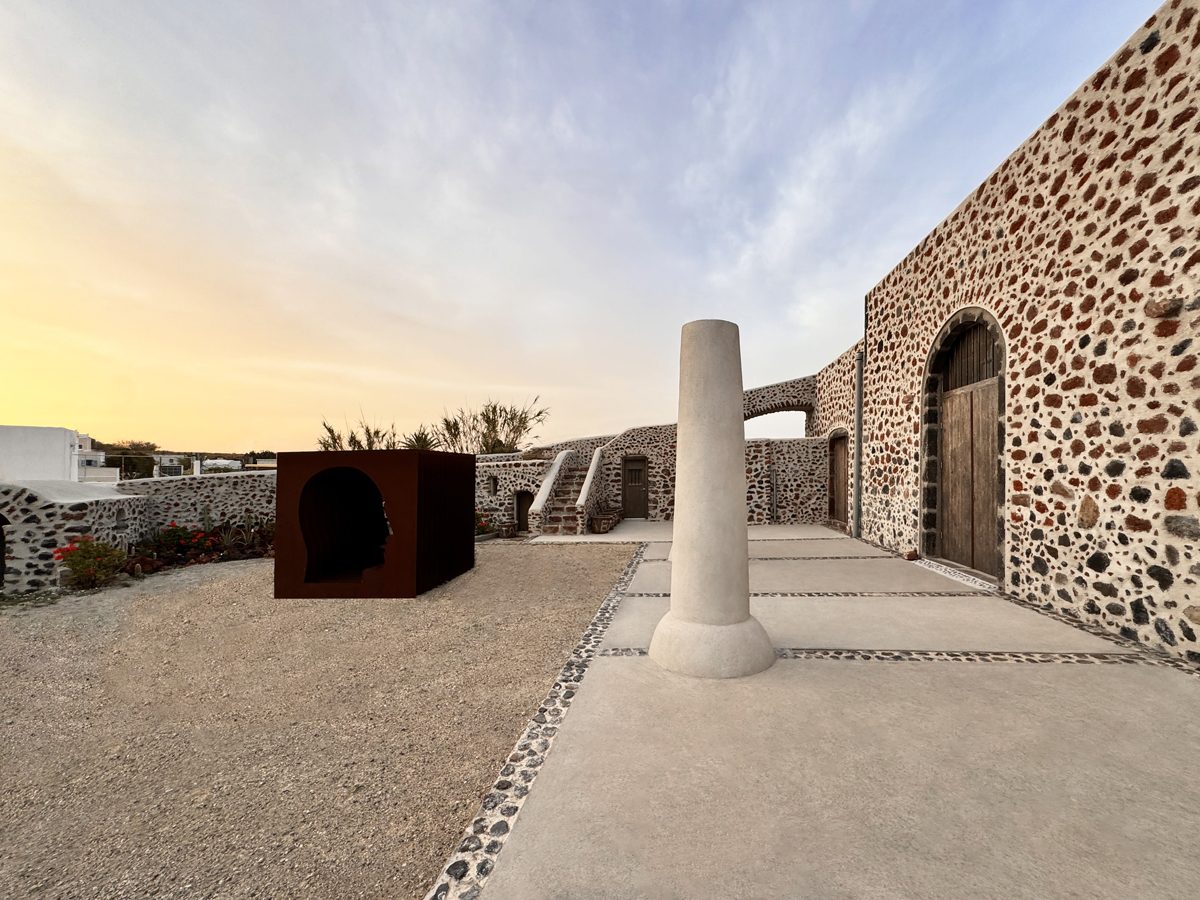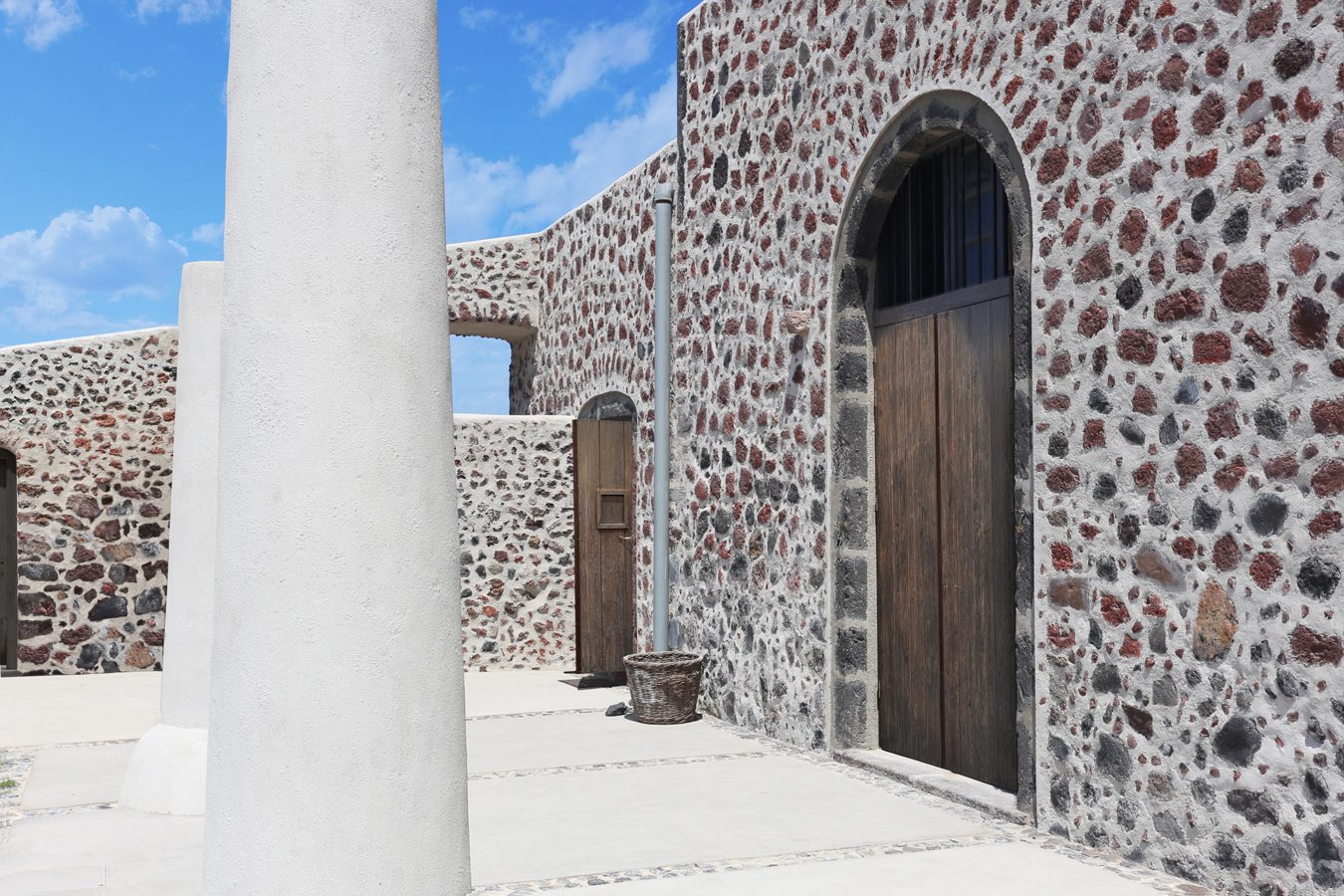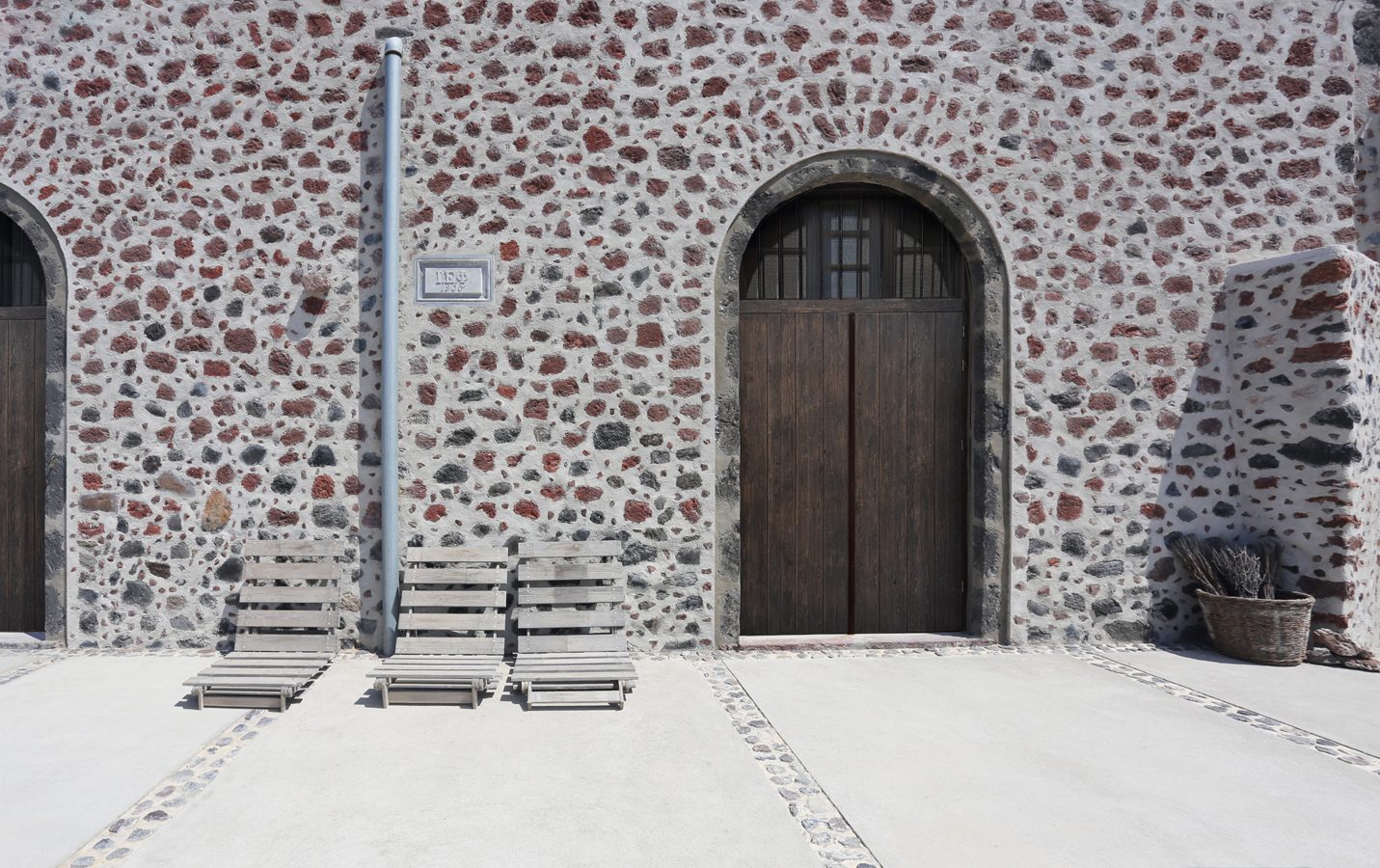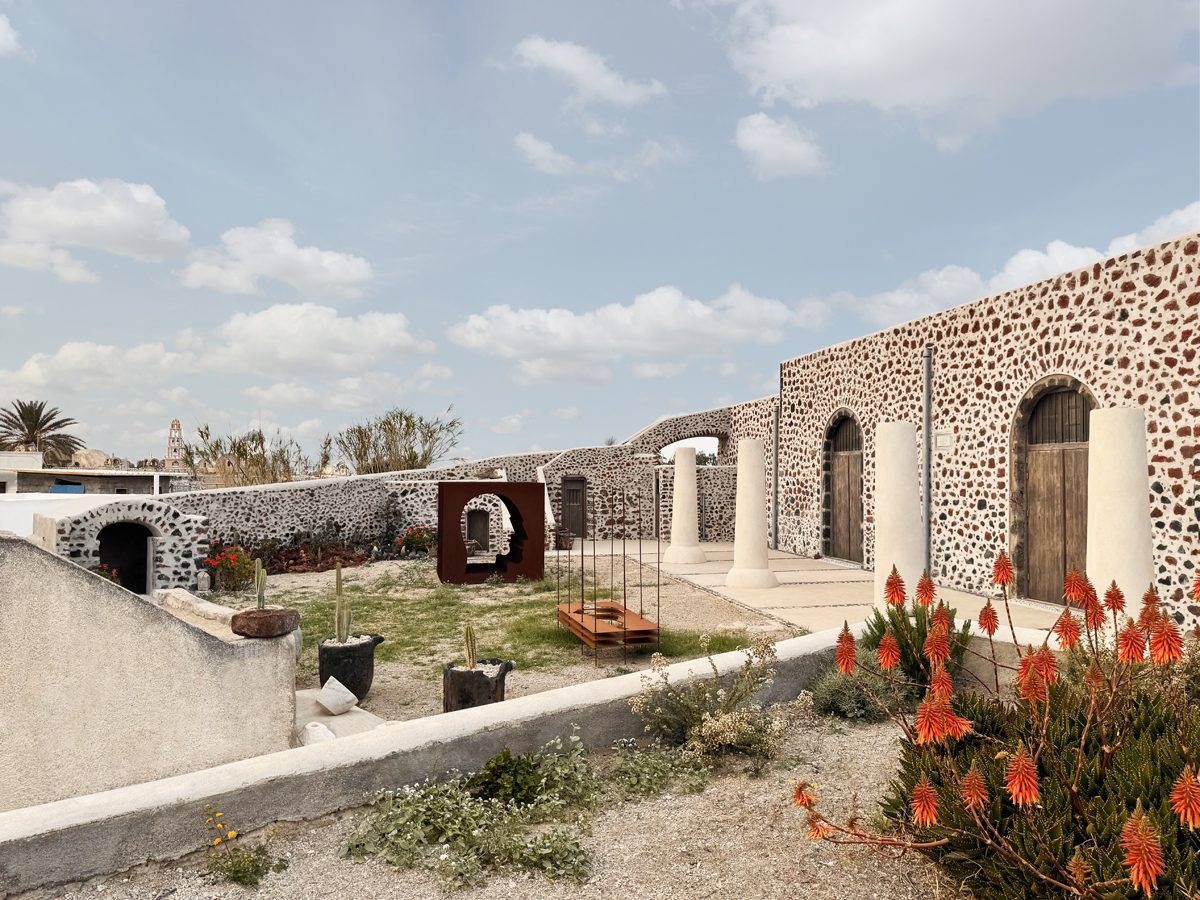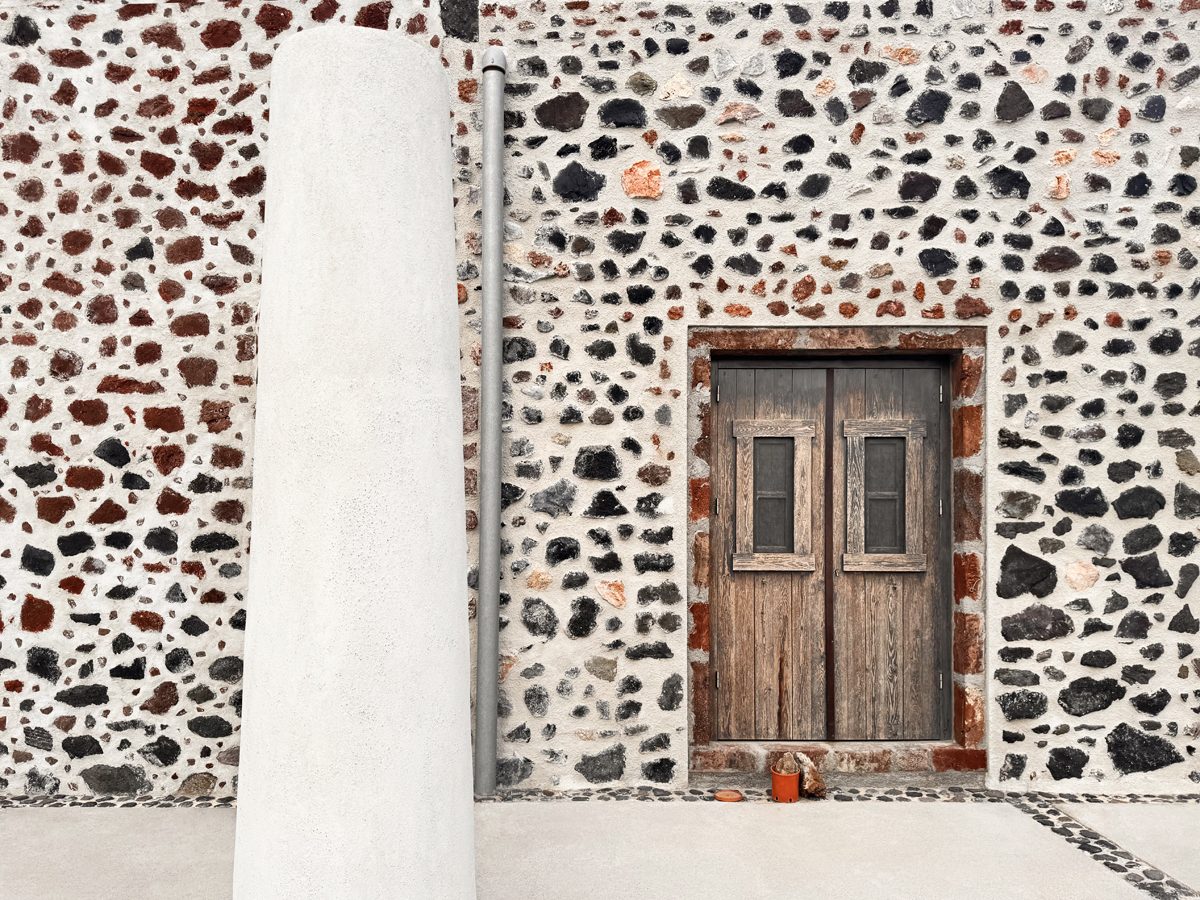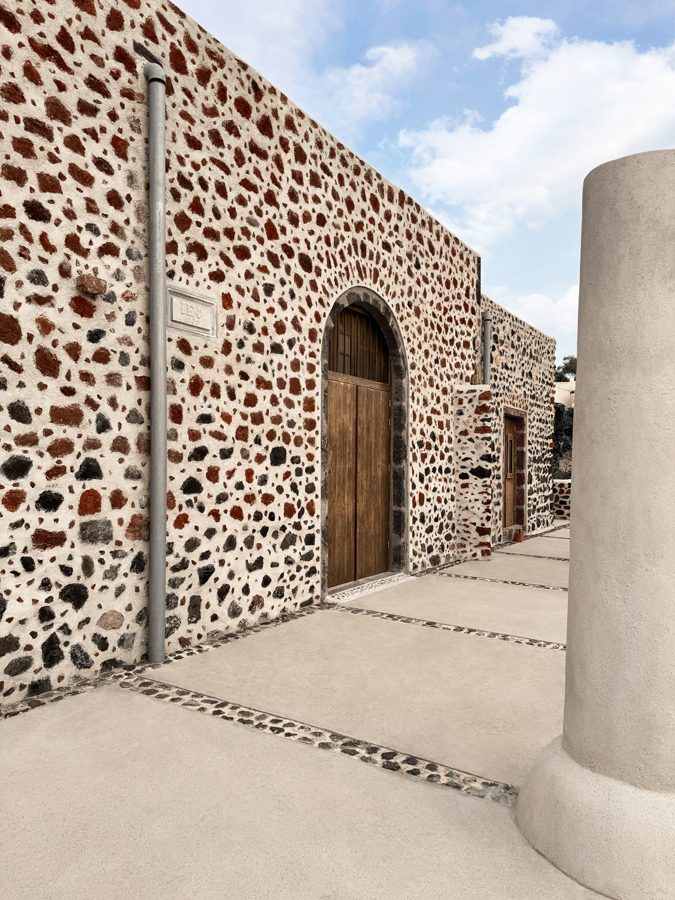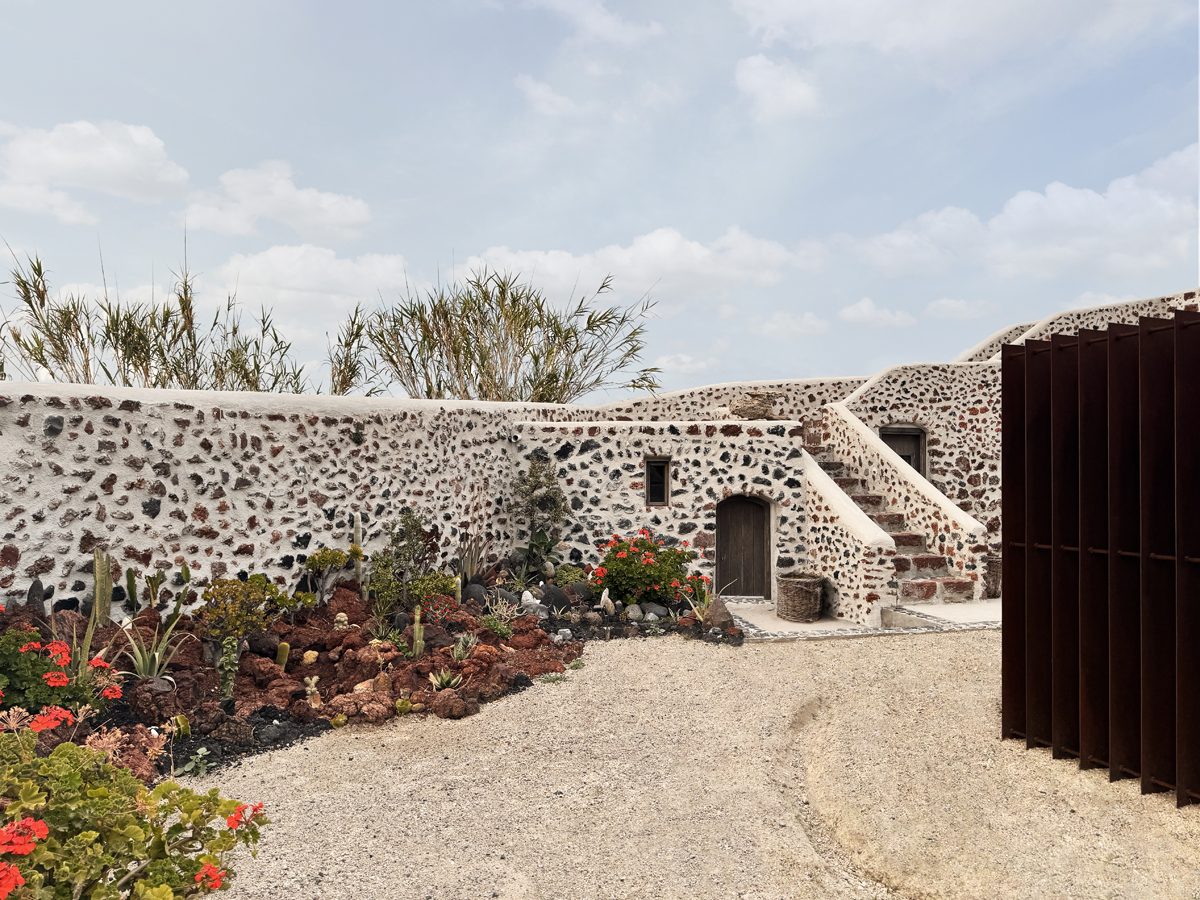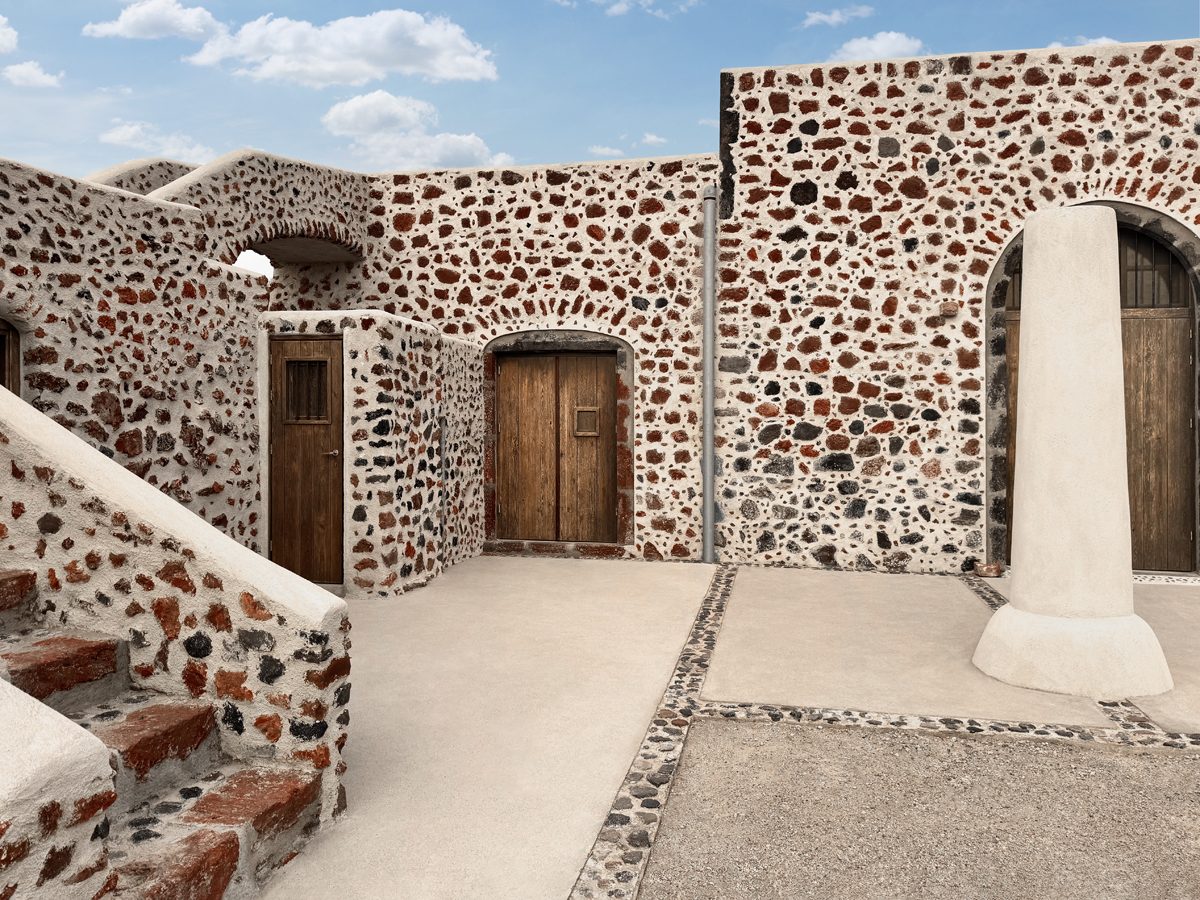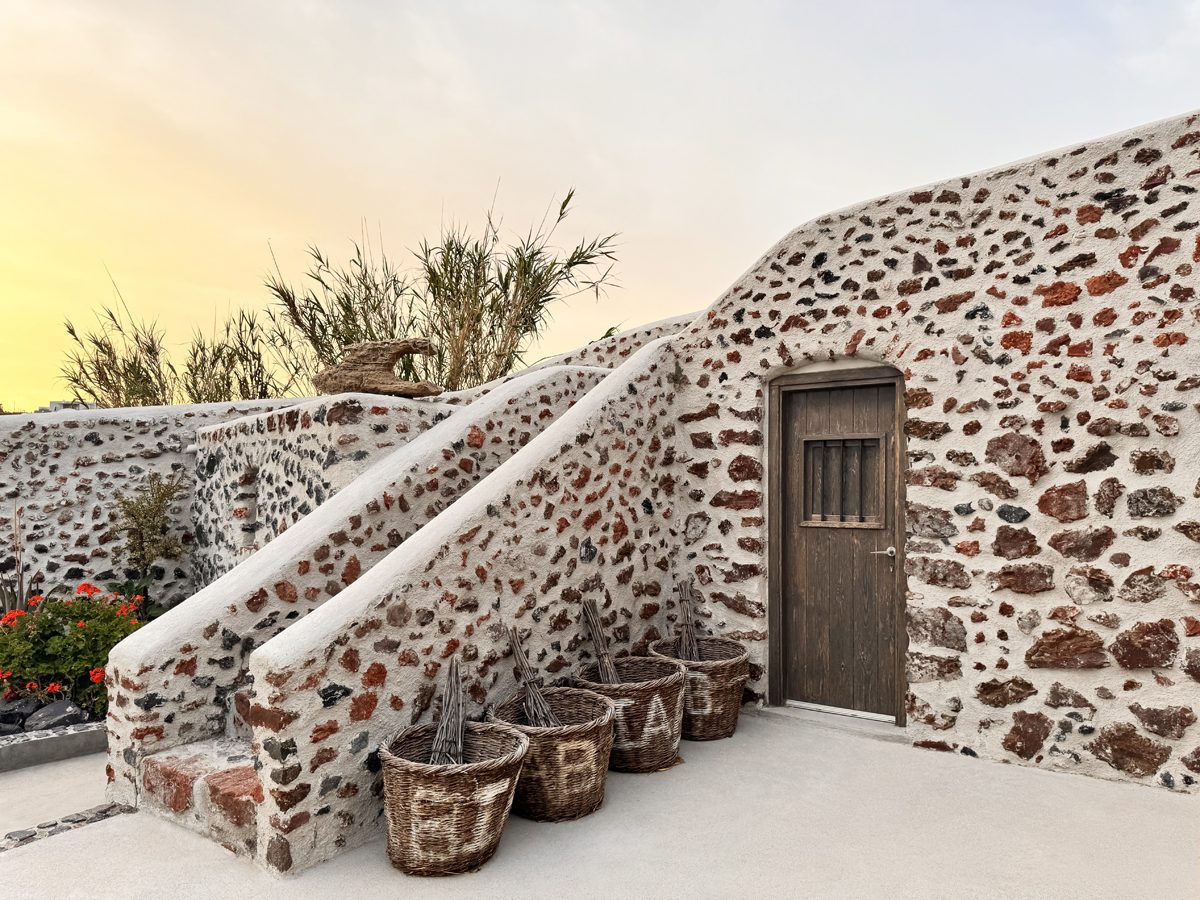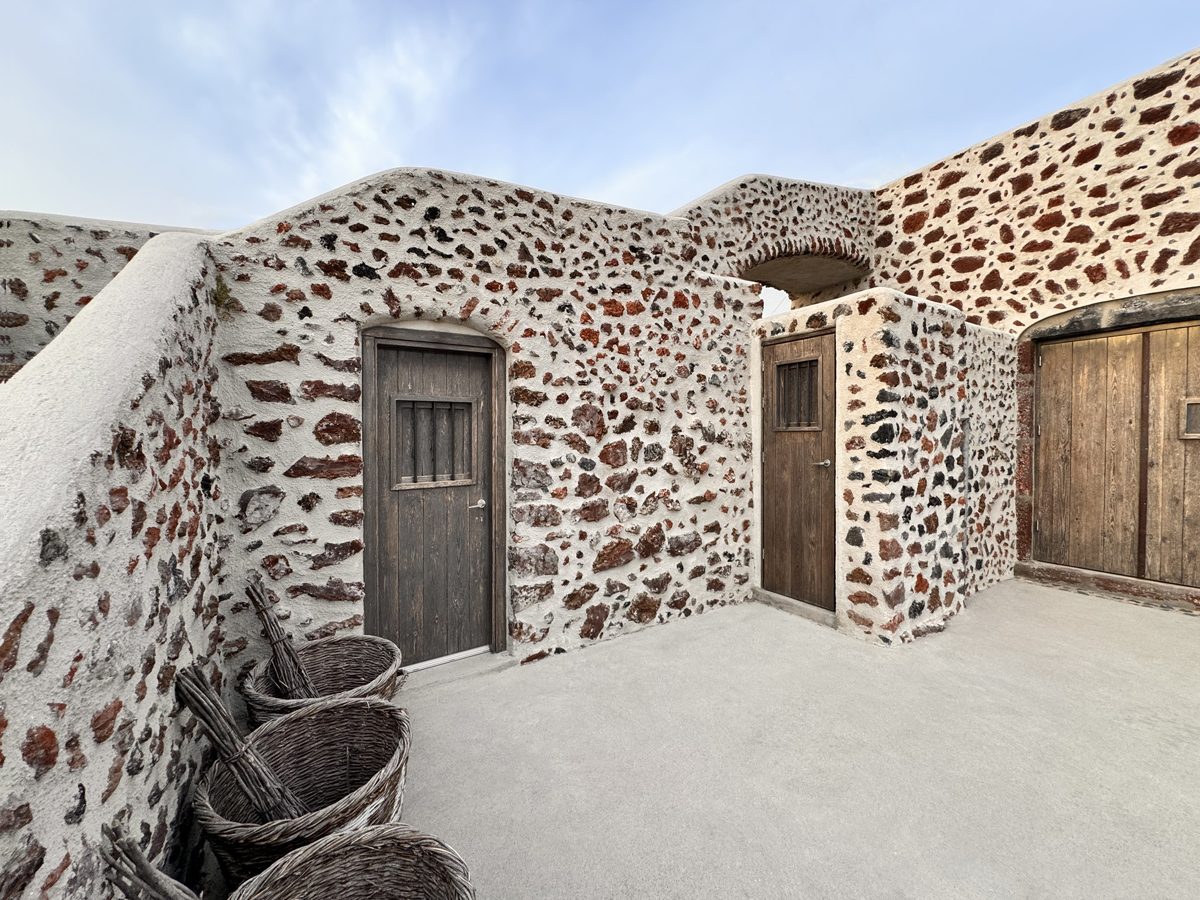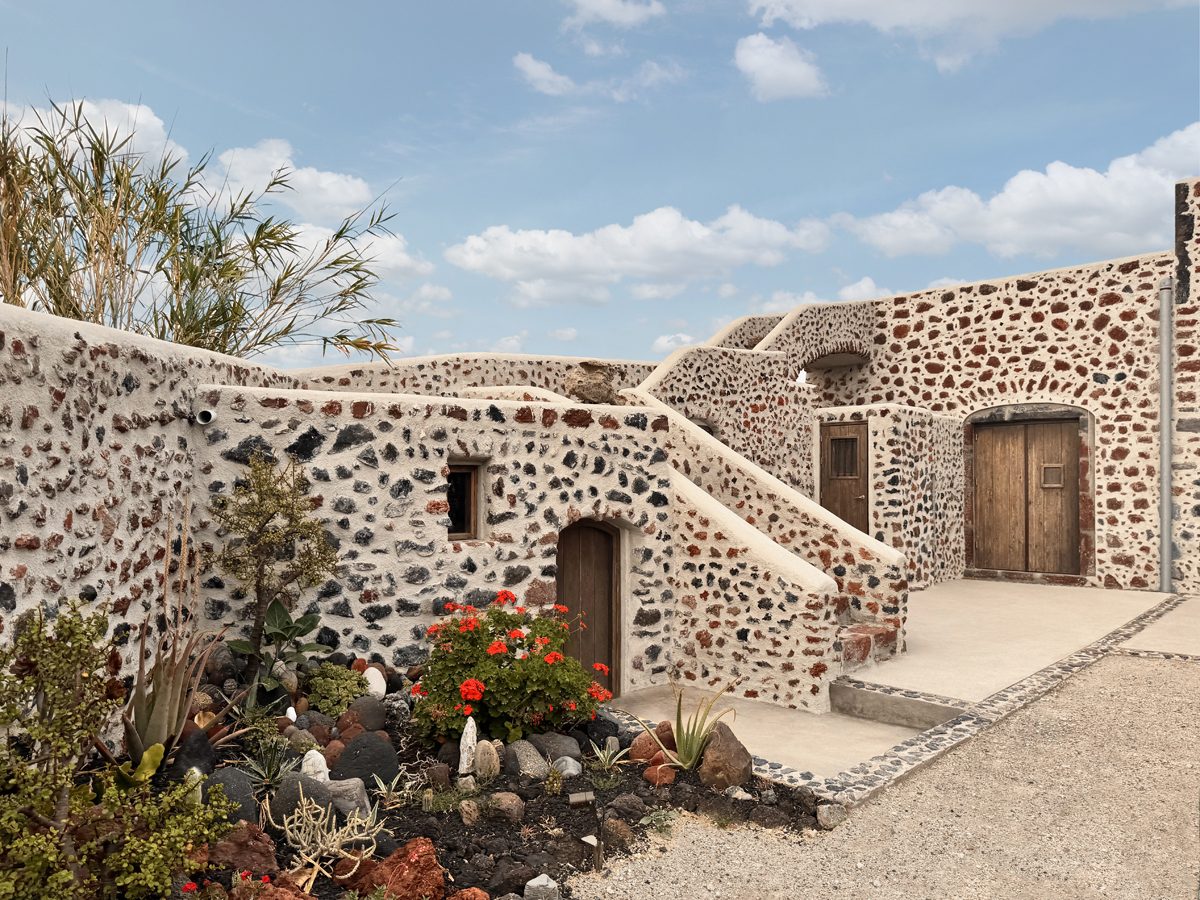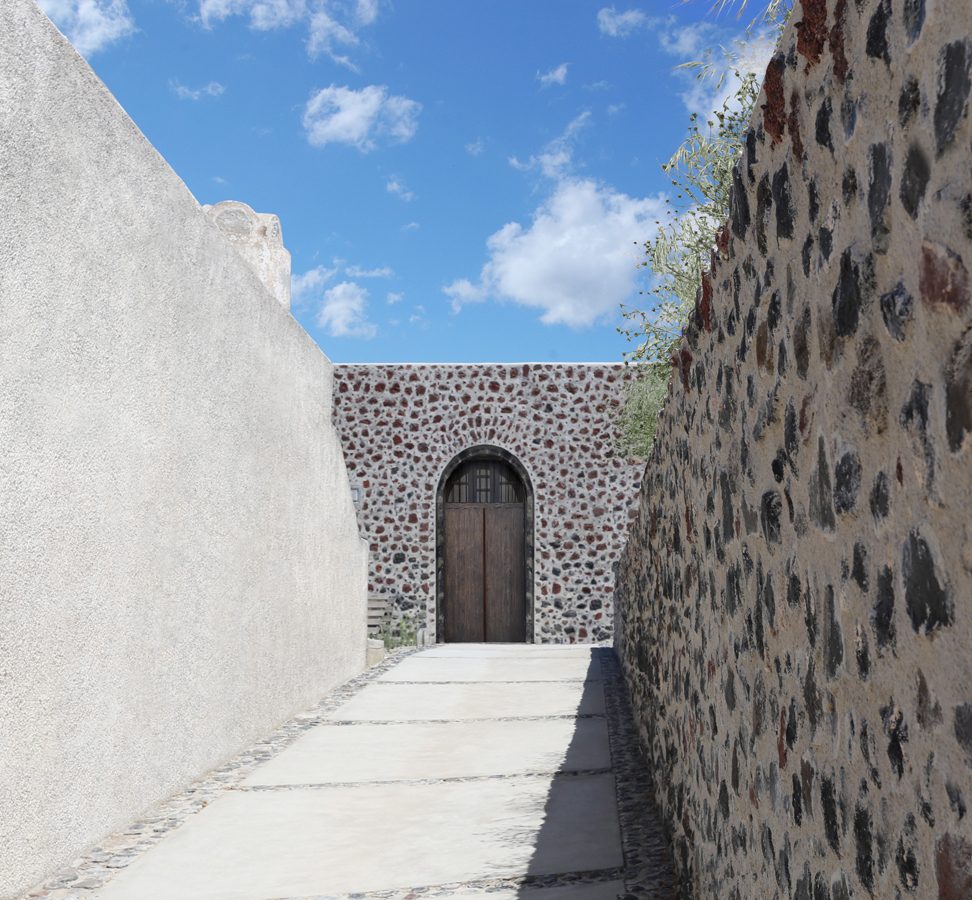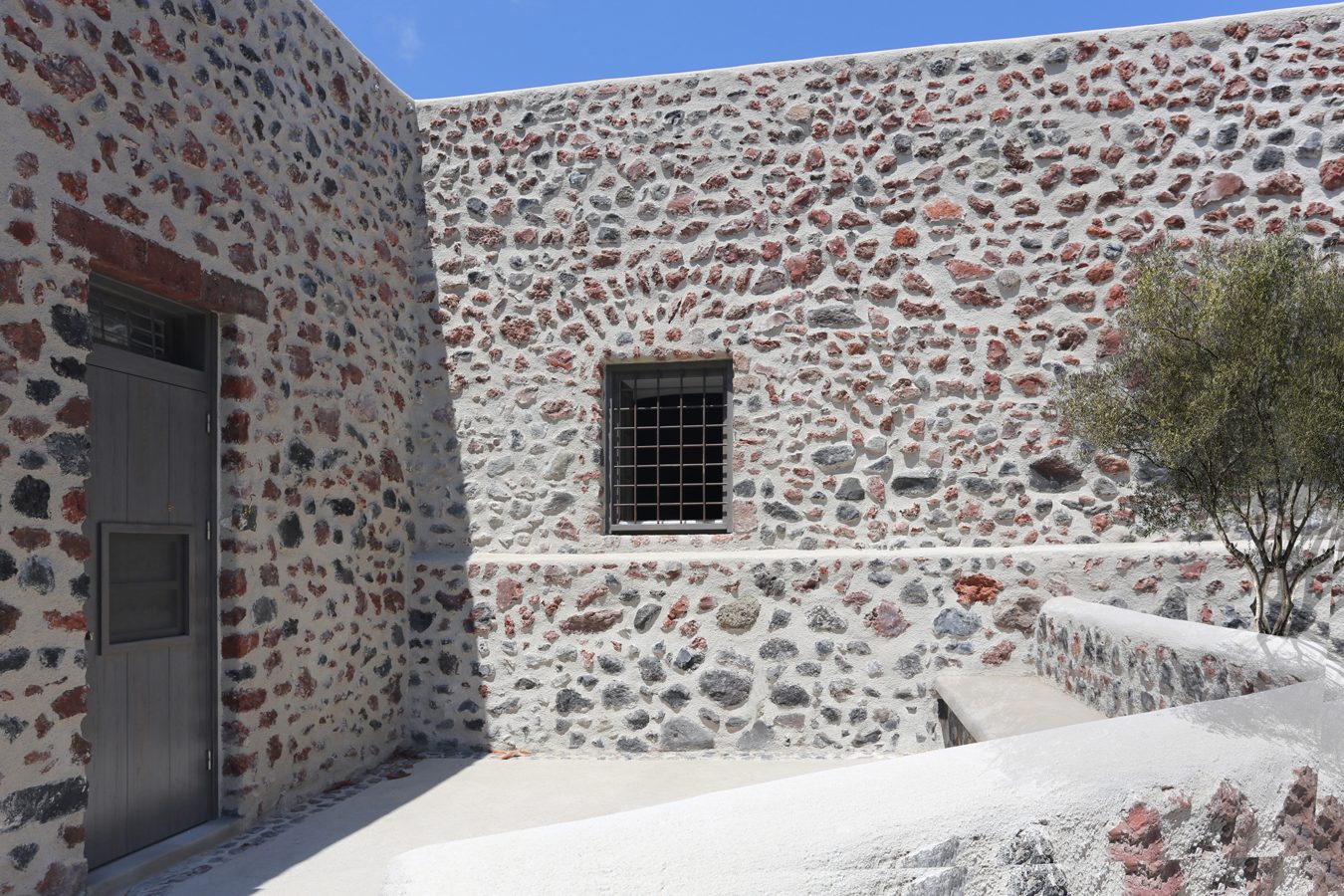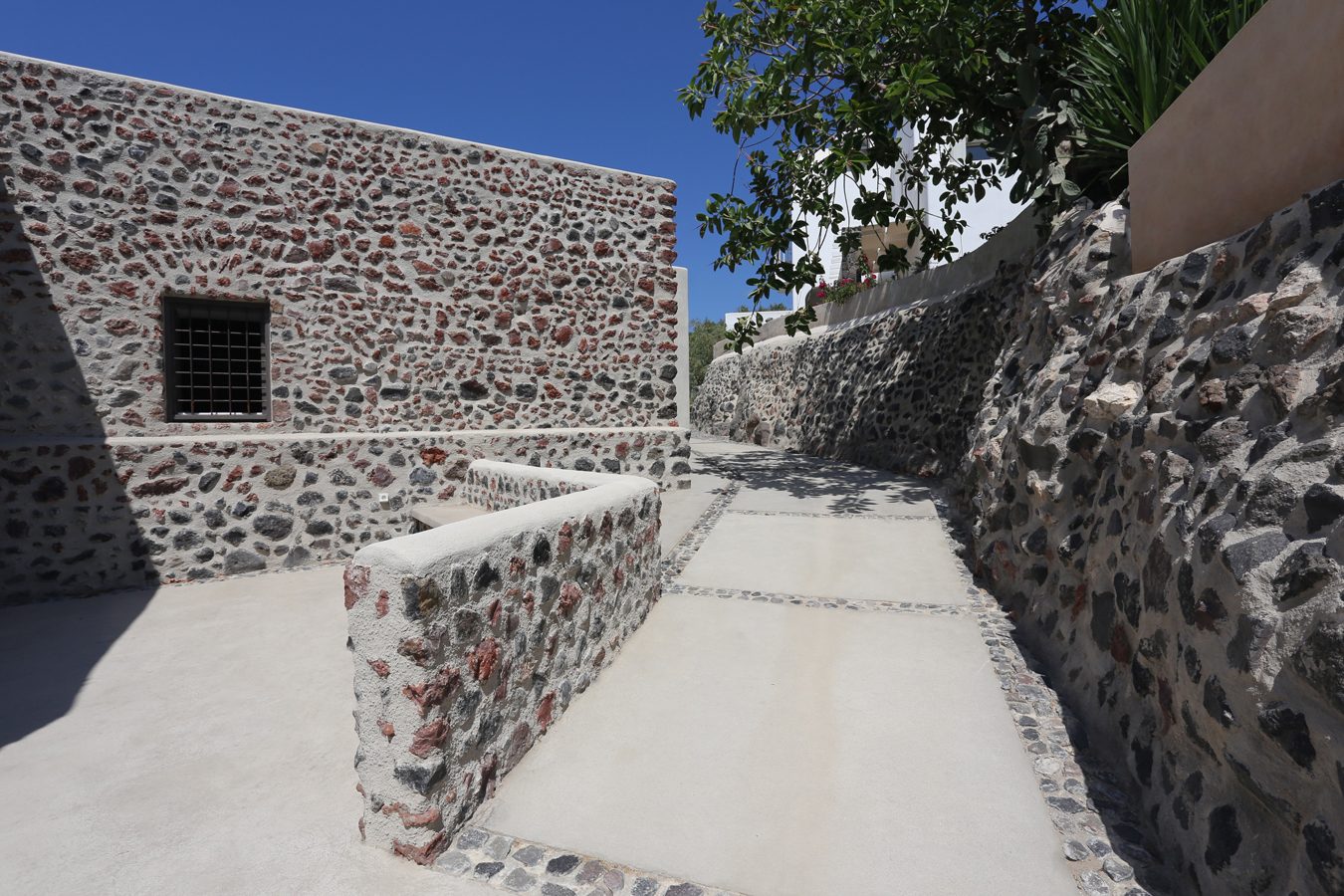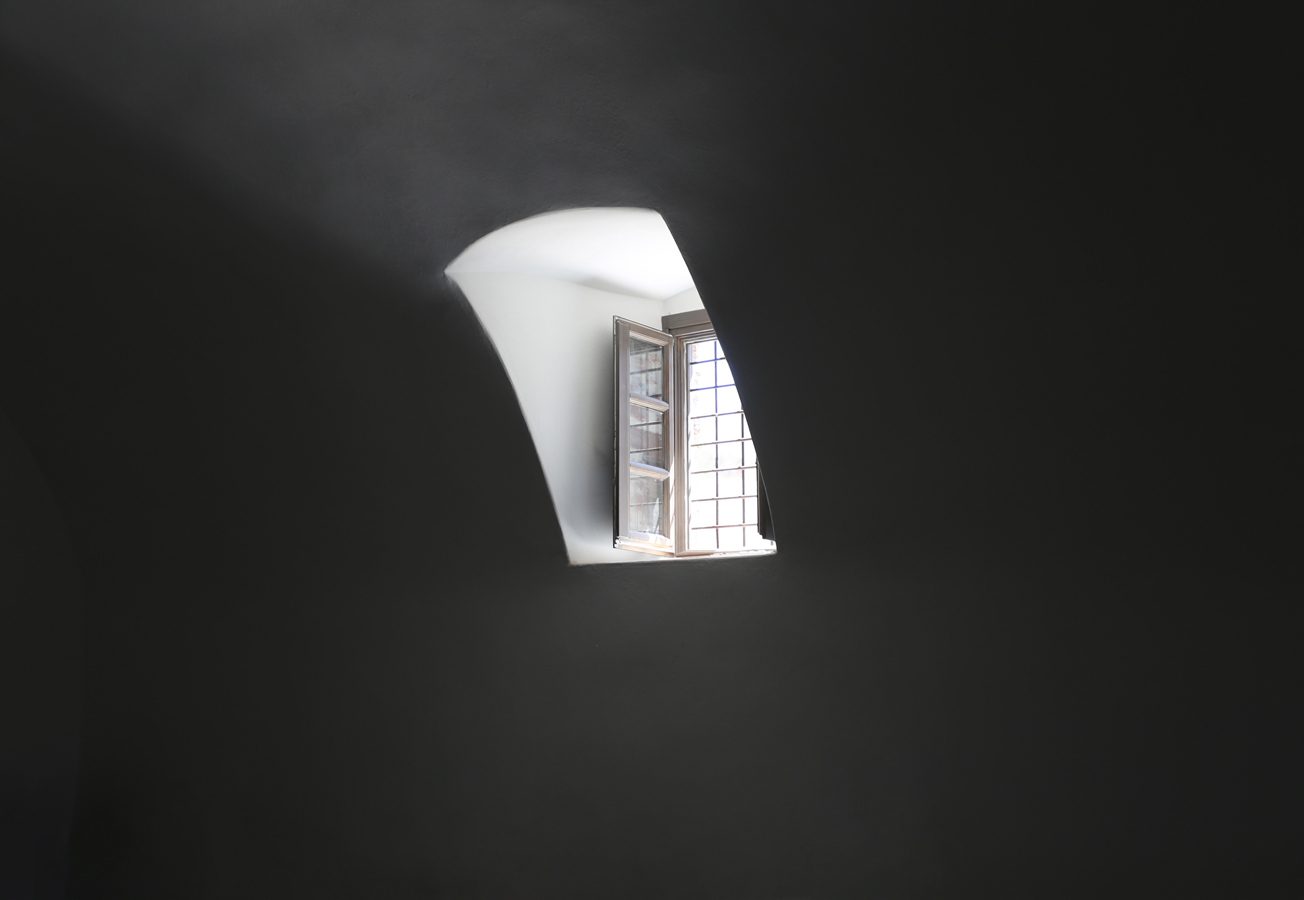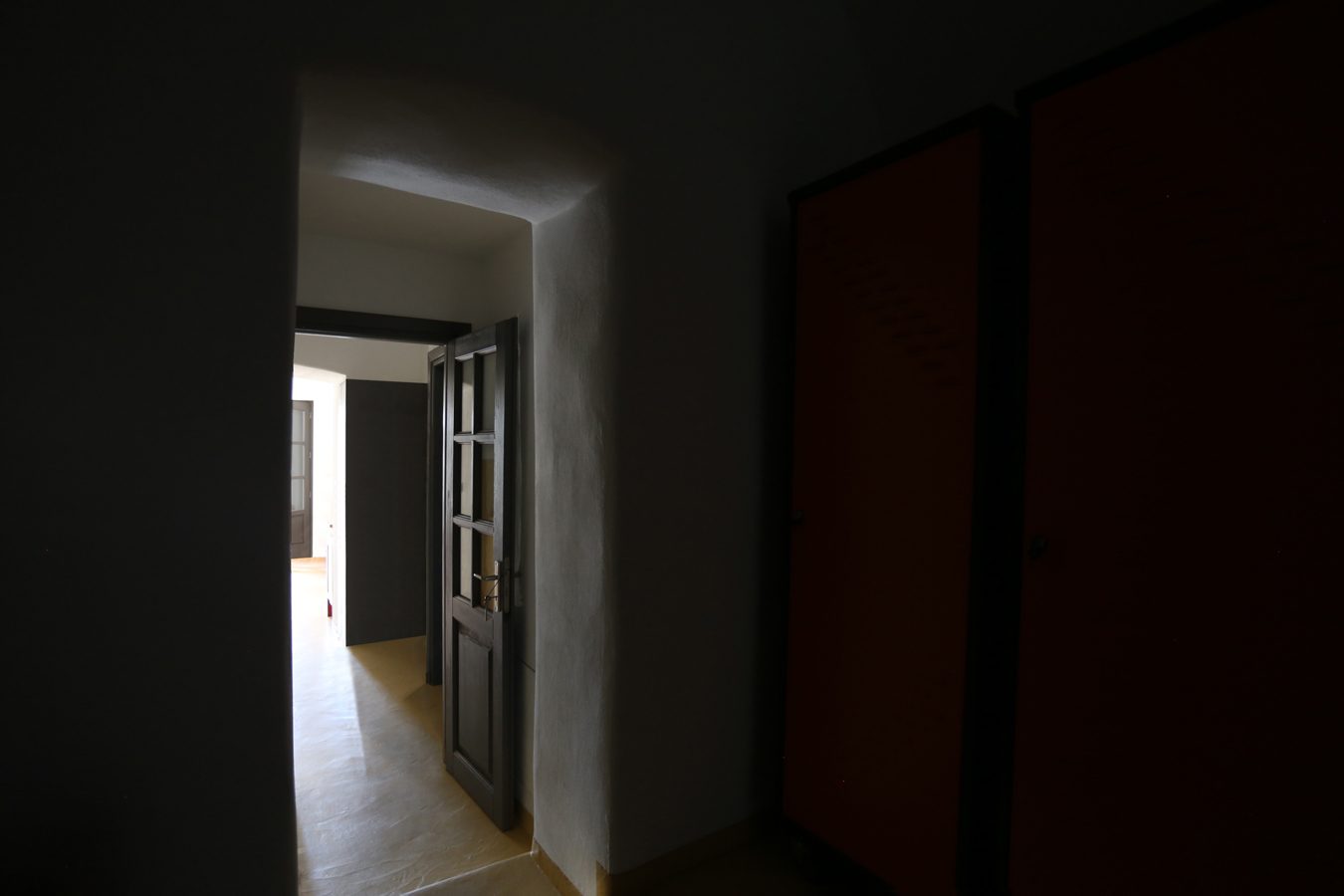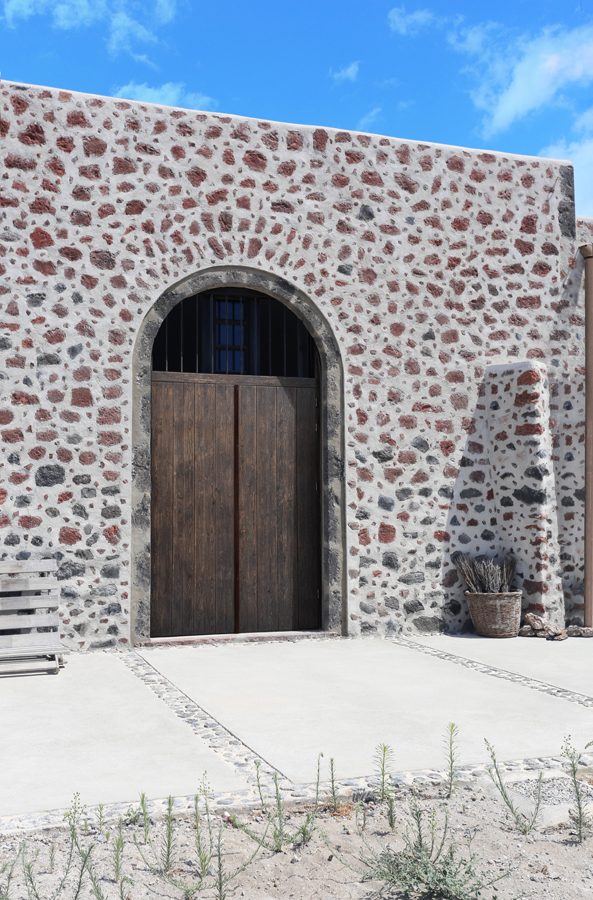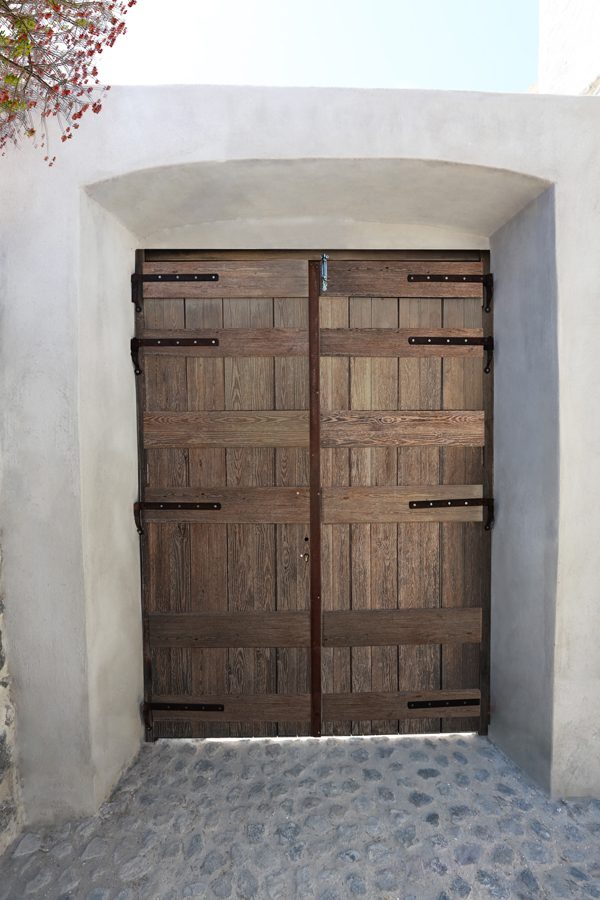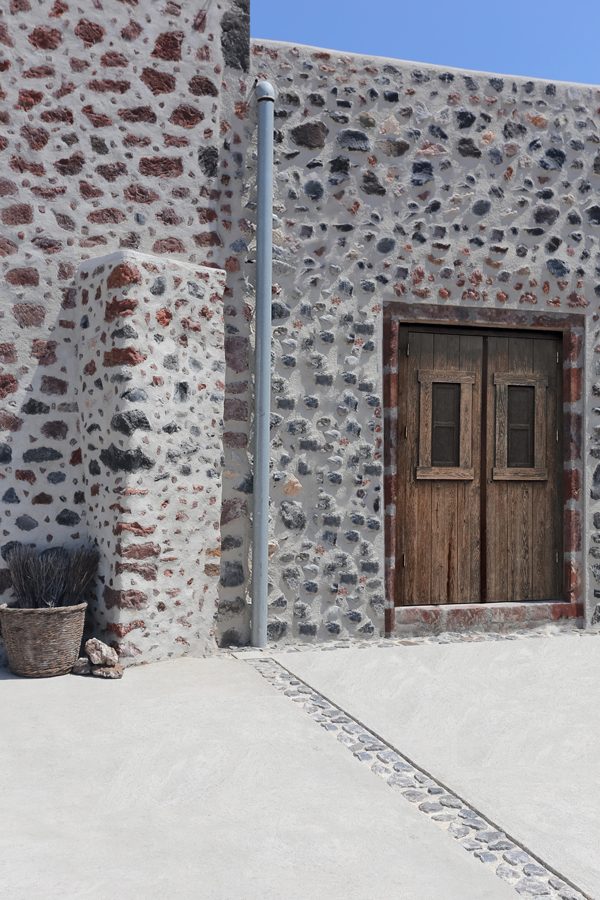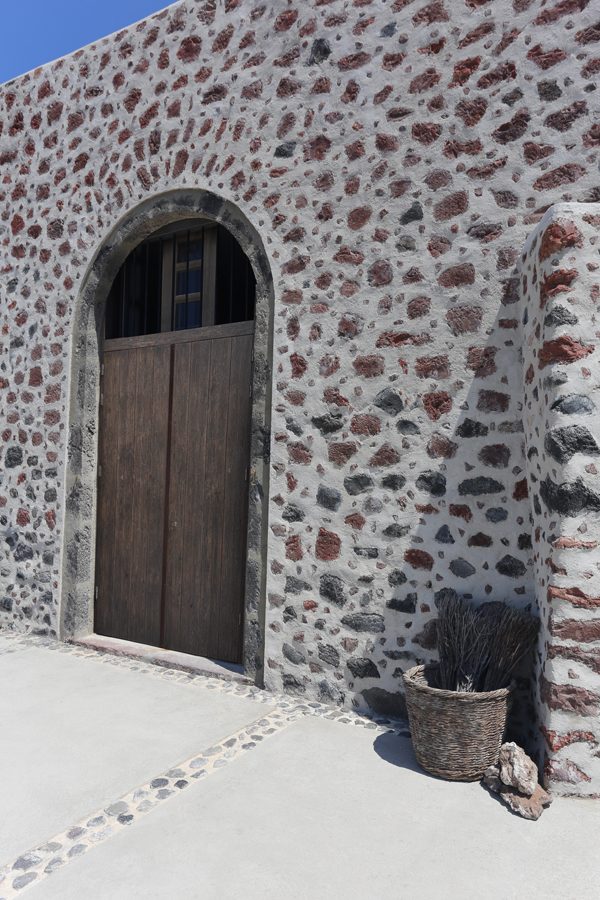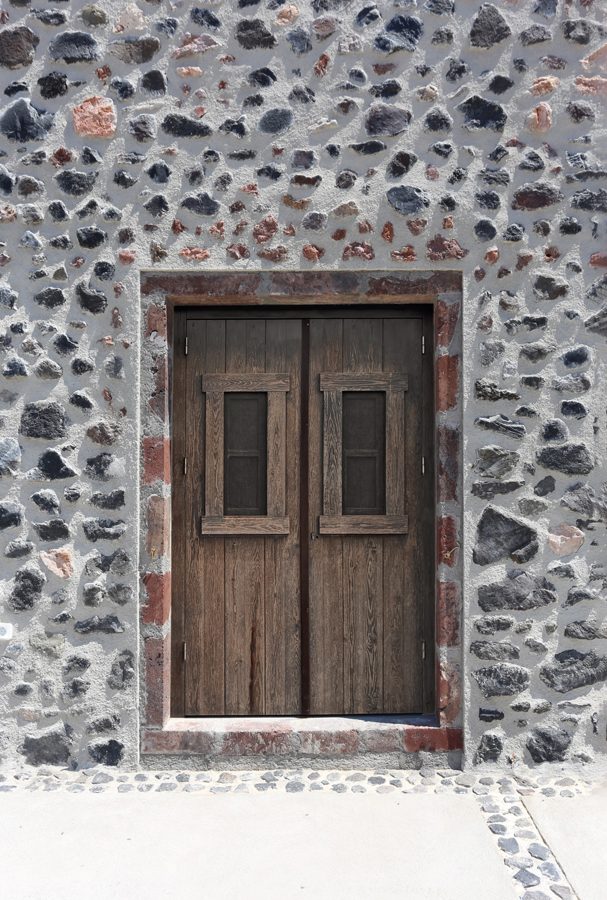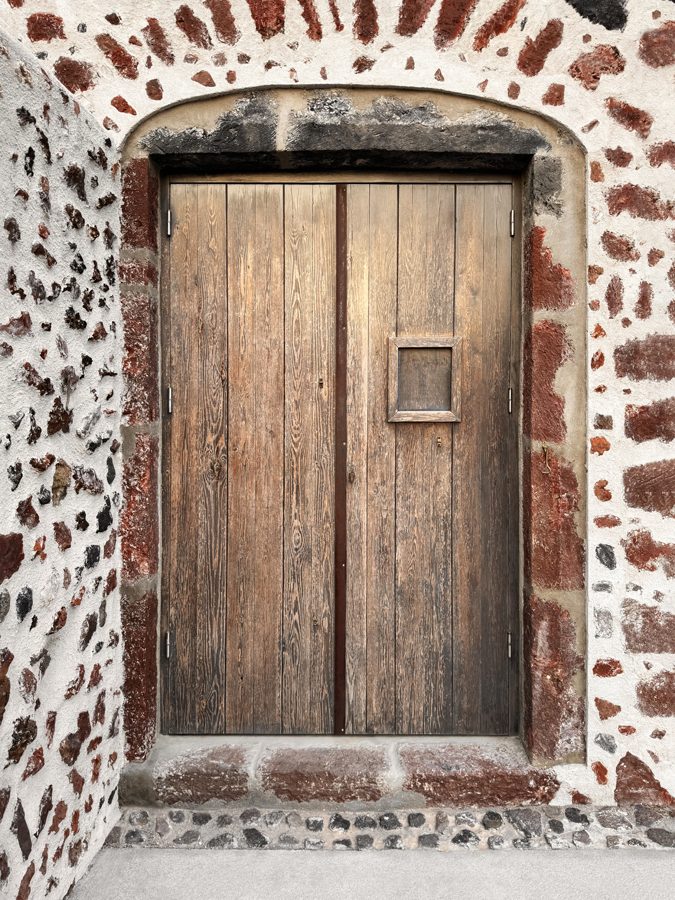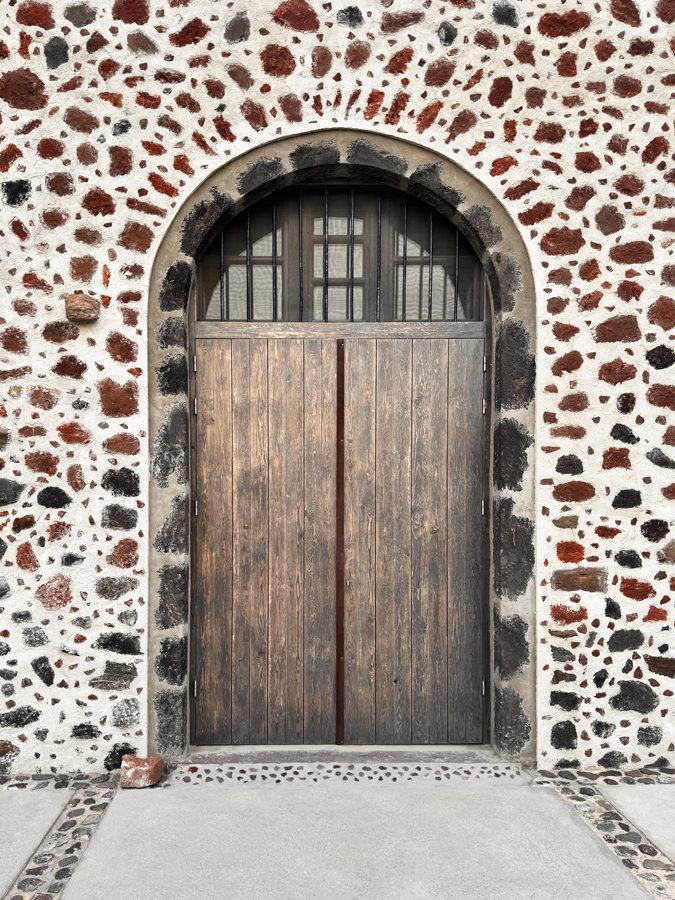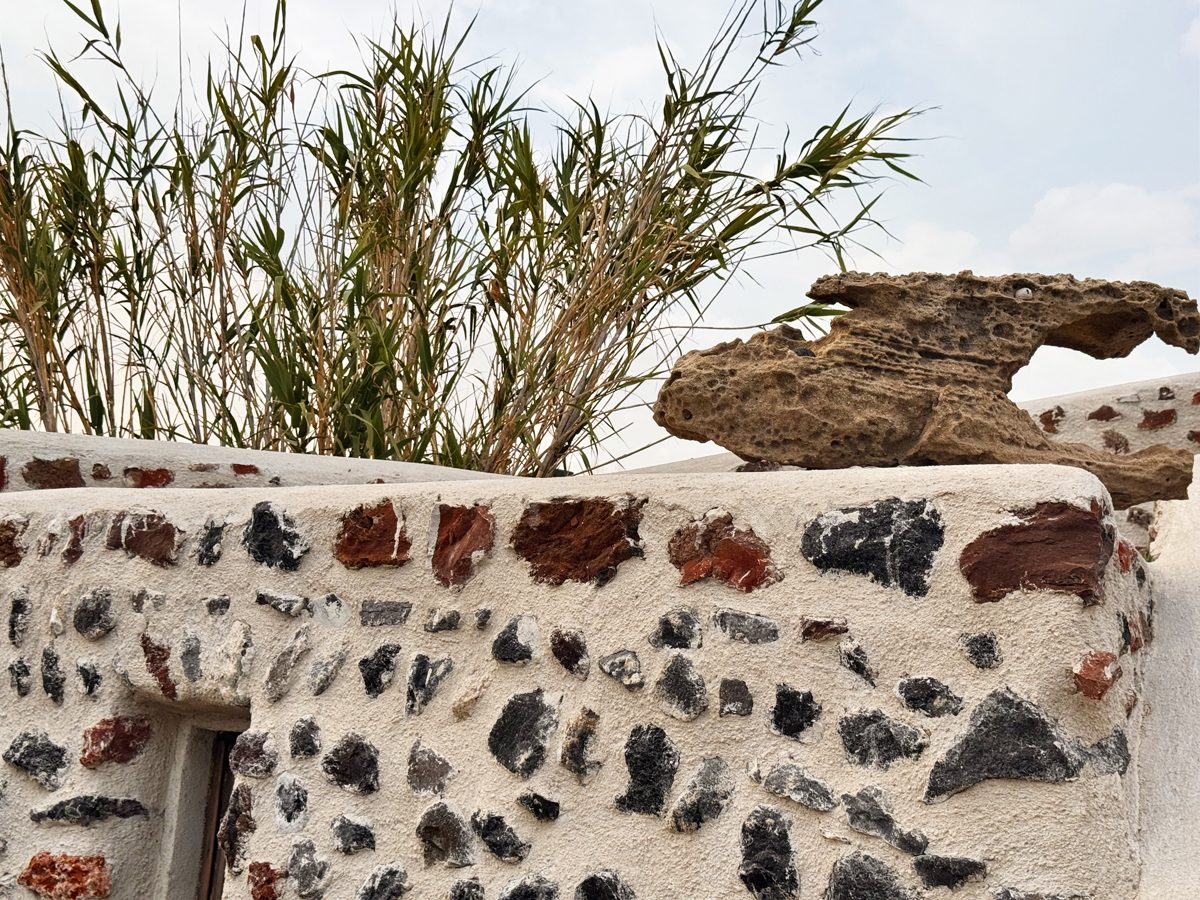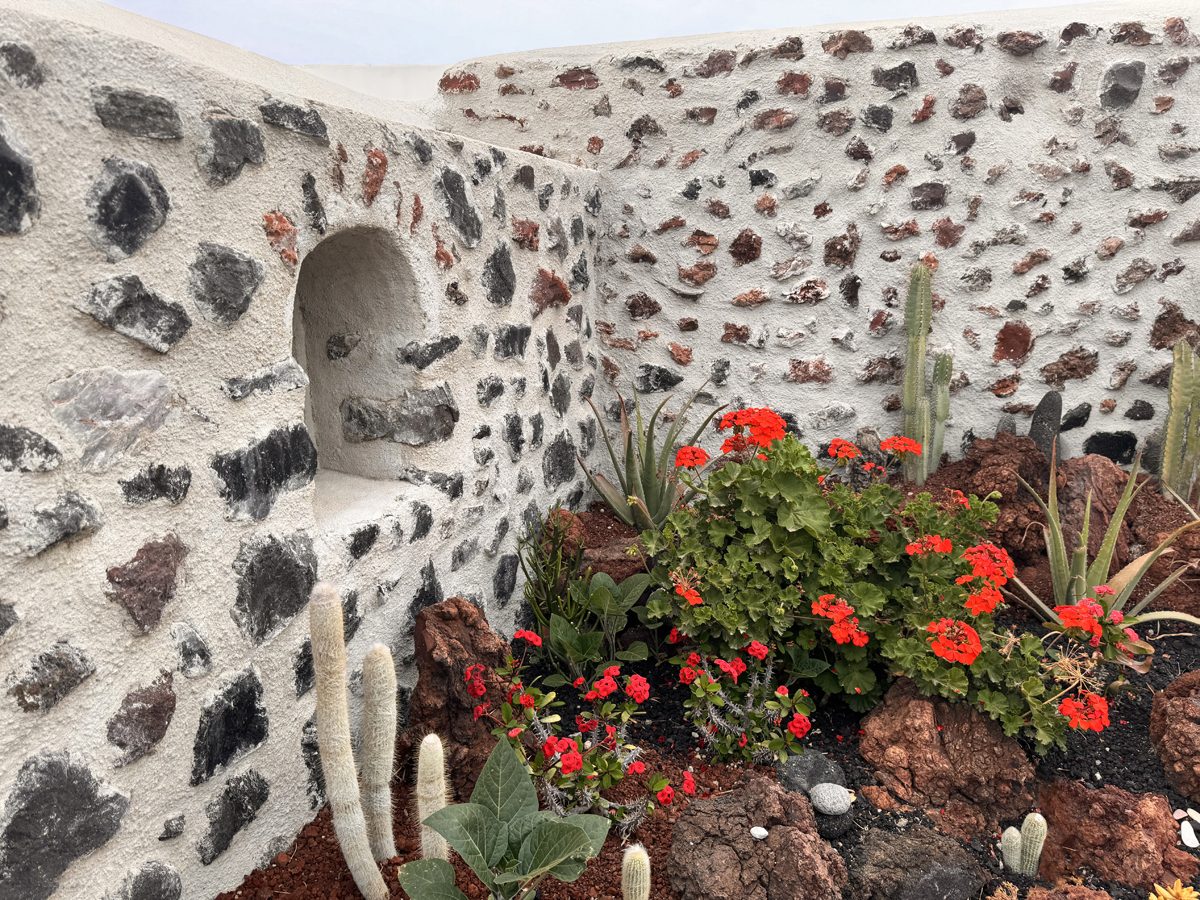Art gallery and residencies
location: Santorini, Greece | bua: 500 m²
designed by V. Baskozos architects & associates
design team: V. Baskozos, Z. Kallianou, N. Grammatikou
The client’s brief called for a restoration and reuse of an old building in Mesaria, Santorini. The edifice, formerly used as a winery – traditionally called Canava-, is a listed building. For many years, it was uninhabited and the load bearing structure of the building was impaired.
Through the entire process, due to the cultural value of the old building, it was important to preserve the integrity of the structure. After establishing that it could not be reused for its original purpose and taking into consideration the new owner’s occupation, we elected to create two residences and two art galleries, making only the minimum necessary interventions.
The exterior was completely preserved. The damage to the wooden doors and windows was irreversible, hence they were replaced by new wooden ones, based on the design of the original ones. The interior layout is divided into four elongated sections. The one on the north end was remodeled into the first residence. It consists of a single open space with an enclosed box in the middle that contains ancillary areas. The living room is located at the front and the bedroom at the back.
Three of the sections are topped with a vaulted roof, while the enclosed central unit doesn’t reach the maximum height. This way the intervention is reversible, and the space is not completely divided, but architecturally filtered.
The vaulted ceilings of the two middle sections are located higher than the one on the residence. The two middle sections are left vacant to host art installations.
The south section is used as a residence. During the previous use of the building, it was probably also used as living quarters with a traditional kitchen in the middle. The living room and dining areas are located at the front, the kitchen and the bathroom in the middle and the bedroom at the back. Openings both at the front and the back provide optimum ventilation.
The goal was to showcase the existing structure with minimum interventions, respecting the cultural significance of the building and allowing reversibility.
